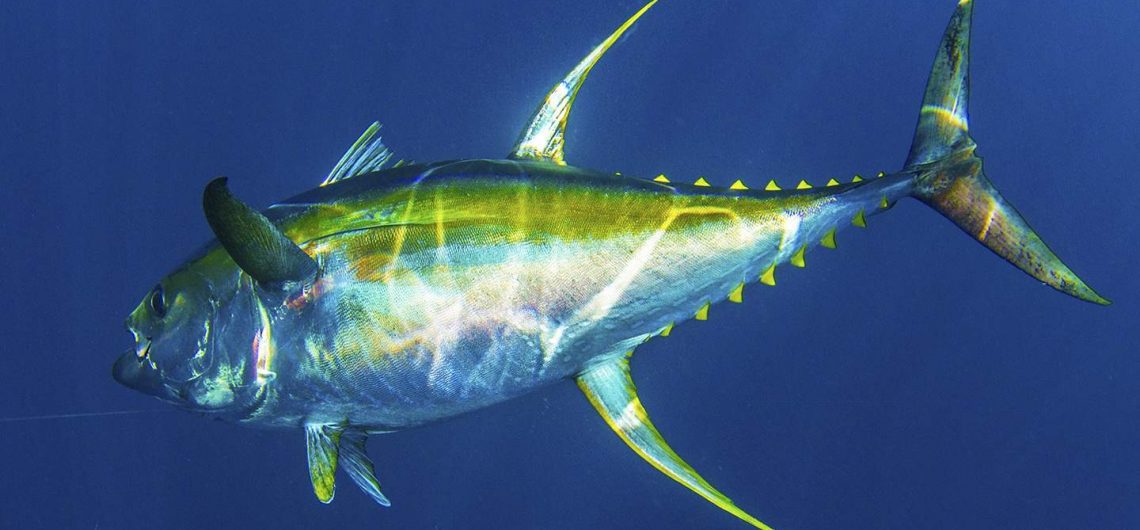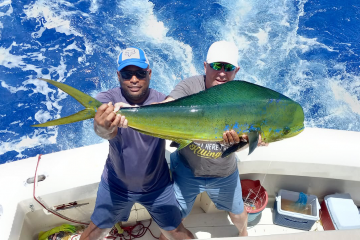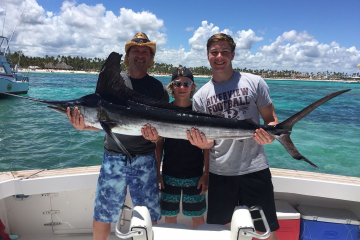YellowFin Tuna
Yellowfin tuna are torpedo-shaped with dark metallic blue backs, yellow sides, and a silver belly. They have very long anal and dorsal fins and finlets that are bright yellow. Yellowfin can live up to six or seven years. They are highly migratory and are found throughout the Pacific, Caribbean Sea, Atlantic and Indian Oceans. They form schools with other tunas like skipjack and bigeye, and are also known to associate with dolphins. Yellowfin are able to breed year-round.
Description
The yellowfin tuna is among the larger tuna species, reaching weights over 180 kg (400 lb), but is significantly smaller than the Atlantic and Pacific bluefin tunas, which can reach over 450 kg (990 lb), and slightly smaller than the bigeye tuna and the southern bluefin tuna.
The second dorsal fin and the anal fin, as well as the finlets between those fins and the tail, are bright yellow, giving this fish its common name. The second dorsal and anal fins can be very long in mature specimens, reaching almost as far back as the tail and giving the appearance of sickles or scimitars. The pectoral fins are also longer than the related bluefin tuna, but not as long as those of the albacore. The main body is a very dark metallic blue, changing to silver on the belly, which has about 20 vertical lines.
Reported sizes in the literature have ranged as high as 2.4 m (94 in) in length and 200 kg (440 lb) in weight. The International Game Fish Association (IGFA) record for this species stands at 176 kg (388 lb)for a fish caught in 1977 near San Benedicto Island in the Pacific waters of Mexico. In 2010, a 184-kg yellowfin was caught off the tip of Mexico’s Baja Peninsula, 2.2-metre (87 in) long with a girth of 1.5 m (59 in). The catch is still pending verification by the IGFA.[citation needed] In 2012, a fisherman in Baja California caught a 193-kg yellowfin. If the catch is confirmed by the IGFA, the fisherman will receive a prize of $1 million.






Comments